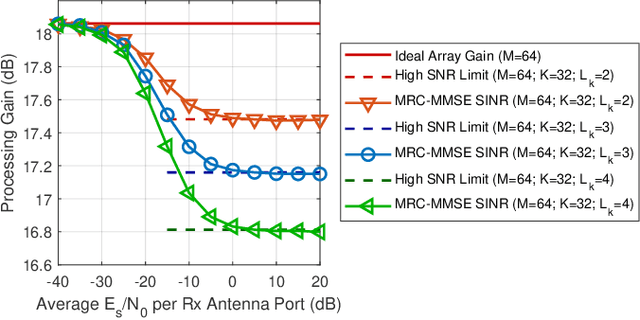Brent A. Kenney
Resource Allocation for Single Carrier Massive MIMO Systems
Feb 28, 2022



Abstract:Resource allocation in orthogonal frequency division multiplexing (OFDM) systems is performed through allocating blocks of subcarriers to each user. Even though OFDM is the primary waveform for 5G NR systems, research reports have noted that single carrier modulation (SCM) offers several advantages over OFDM in massive multiple input multiple output (MIMO) systems, making it a preferred candidate for some future applications such as massive machine type communications (mMTC). This paper presents a method for SCM resource allocation and the relevant information recovery algorithms at the receiver. Our emphasis is on cyclic prefixed SCM, where highly flexible and efficient frequency domain detection algorithms enable the operation of many simultaneous users in a massive MIMO uplink scenario. The proposed resource allocation method allows the number of users to exceed the number of antennas at the base station (BS). Each single carrier transmission is partitioned into $L$ interleaved streams, and each user is allocated a number of such streams. One major benefit of SCM is that each data symbol is spread over the entire bandwidth. As such, the receiver performance is dictated by the average channel gain across the transmission band rather than the channel gain at a given frequency bin or a small group of frequencies. In the proposed setup, each stream may be thought of as a resource block in SCM, analogous to resource blocks in OFDM. Hence, in the context of this paper, the terms resource blocks and streams may be used interchangeably.
Efficient Precoding for Single Carrier Modulation in Multi-User Massive MIMO Networks
Mar 13, 2021

Abstract:By processing in the frequency domain (FD), massive MIMO systems can approach the theoretical per-user capacity using a single carrier modulation (SCM) waveform with a cyclic prefix. Minimum mean squared error (MMSE) detection and zero forcing (ZF) precoding have been shown to effectively cancel multi-user interference while compensating for inter-symbol interference. In this paper, we present a modified downlink precoding approach in the FD based on regularized zero forcing (RZF), which reuses the matrix inverses calculated as part of the FD MMSE uplink detection. By reusing these calculations, the computational complexity of the RZF precoder is drastically lowered, compared to the ZF precoder. Introduction of the regularization in RZF leads to a bias in the detected data symbols at the user terminals. We show this bias can be removed by incorporating a scaling factor at the receiver. Furthermore, it is noted that user powers have to be optimized to strike a balance between noise and interference seen at each user terminal. The resulting performance of the RZF precoder exceeds that of the ZF precoder for low and moderate input signal-to-noise ratio (SNR) conditions, and performance is equal for high input SNR. These results are established and confirmed by analysis and simulation.
 Add to Chrome
Add to Chrome Add to Firefox
Add to Firefox Add to Edge
Add to Edge